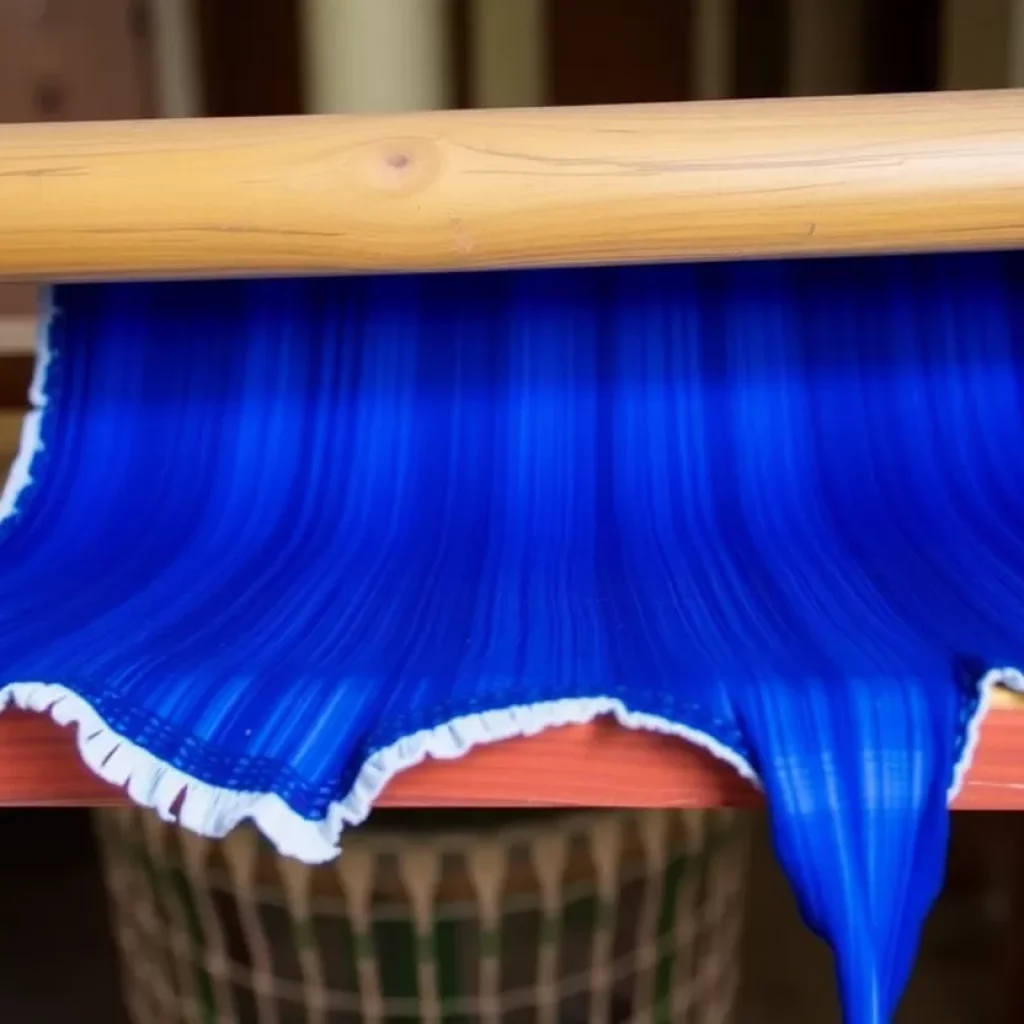Reviving Indigo: A New Chapter for South Carolina’s Historic Dye
Charleston, South Carolina — Artists, farmers, and designers in the Lowcountry are forging a fresh path in the storied history of indigo dyeing. This renaissance is taking root in various corners of the region, specifically from Charleston to Johns Island and extending to St. Helena Island.
The Power of Discovery
Nearly a decade ago, Leigh Magar wandered along the rural landscapes of Johns Island, wielding a unique “snake stick” to keep dangerous wildlife at bay. Her walk took an unexpected turn when a stunning blue dragonfly landed on her stick and caught her attention. Following the insect into the woods led her to an unexpected find: a patch of wild blue indigo hidden within the forest. This moment of serendipity sparked her passion for the indigo plant, known as Indigo suffruticosa, which is prized for its rich, deep ocean-blue hue.
Indigo’s Historical Background
Indigo has long held cultural and economic significance in the South. In the 18th century, it was among the major cash crops in the area, alongside rice and cotton. The success of indigo as an export relied heavily on the skills and labor of enslaved Africans, who cultivated the plant and extracted the dye. This intricate history intertwines notions of art, fashion, and social justice into the current revival of indigo in South Carolina.
A Modern Movement
Today, the reemergence of indigo is being led by a diverse array of creatives who are committed to the “seed to stitch” movement. This initiative emphasizes the entire process—from growing and harvesting to extracting and dyeing fabric. The growing popularity of plant-based dyes resonates with a larger movement focused on sustainability and ecological awareness. Nationally, the inclination toward nontoxic dyes such as indigo, turmeric, and marigolds reflects a shift in consumer preferences.
Connecting to Global Narratives
The renewed interest in indigo isn’t just a local phenomenon. It intersects with a broader examination of Africa’s role in the fashion industry. Recent exhibitions, such as “African Fashion” and “Blue Gold: The Art and Science of Indigo,” highlight the ongoing dialogue regarding global influences on modern design and the historical context often overlooked.
Community and Collaboration
Local artists and farmers are actively participating in workshops and cultural exchanges that educate and promote the significance of indigo. By sharing expertise and traditions, they aim to create a sustainable network that honors both the past and the future of the dye. Projects on Johns Island have helped foster collaboration among various stakeholders as they explore creative potential while paying homage to the cultural heritage of indigo.
Looking Ahead
The coexistence of history, artistry, and sustainable practices heralds a bright future for indigo in the Lowcountry. As new generations of artisans deepen their ties to the land and its history, they are rewriting the story of this cherished dye—transforming its legacy into a vision of creativity and community.







